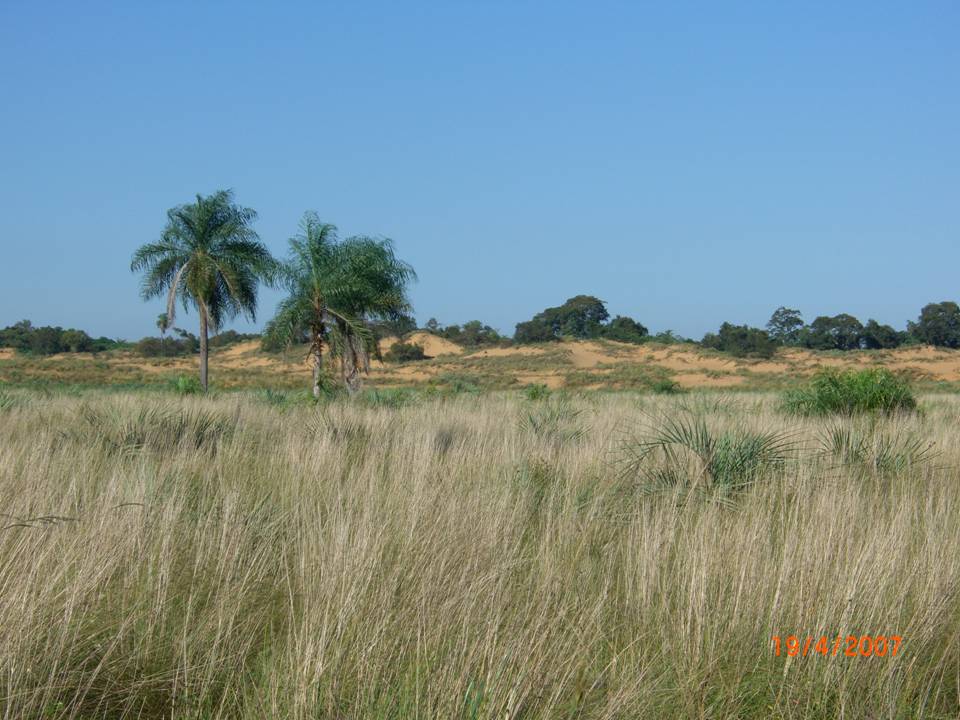

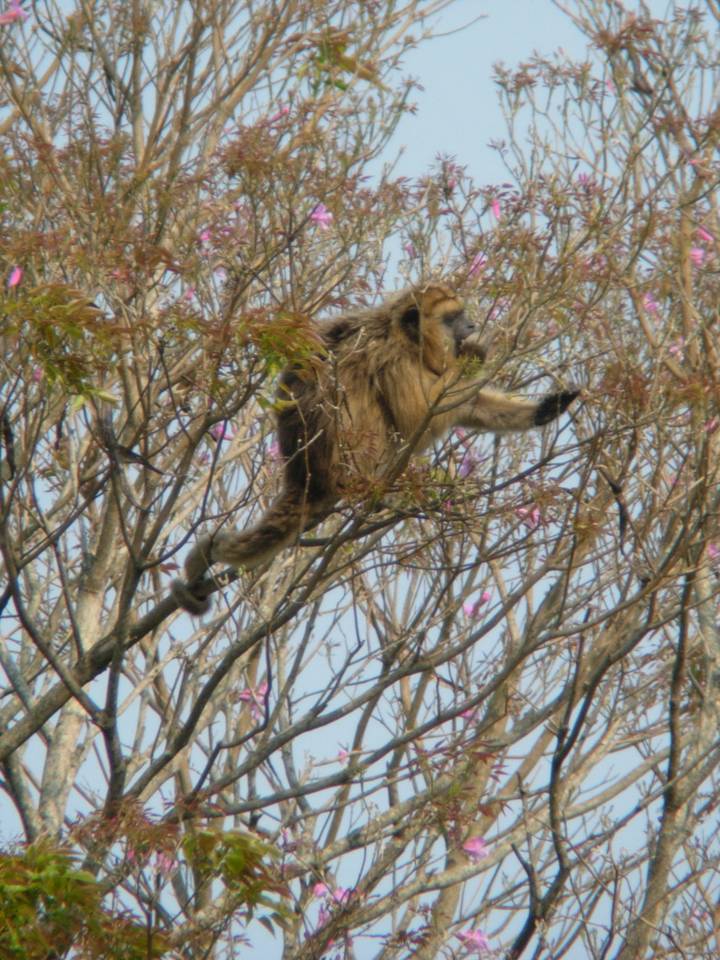
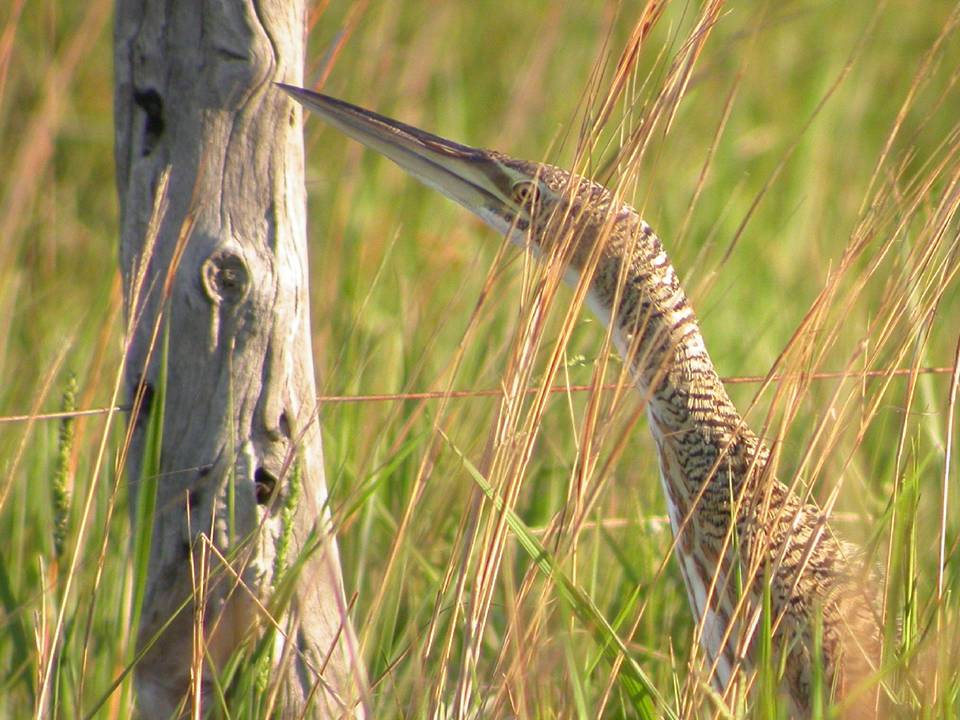
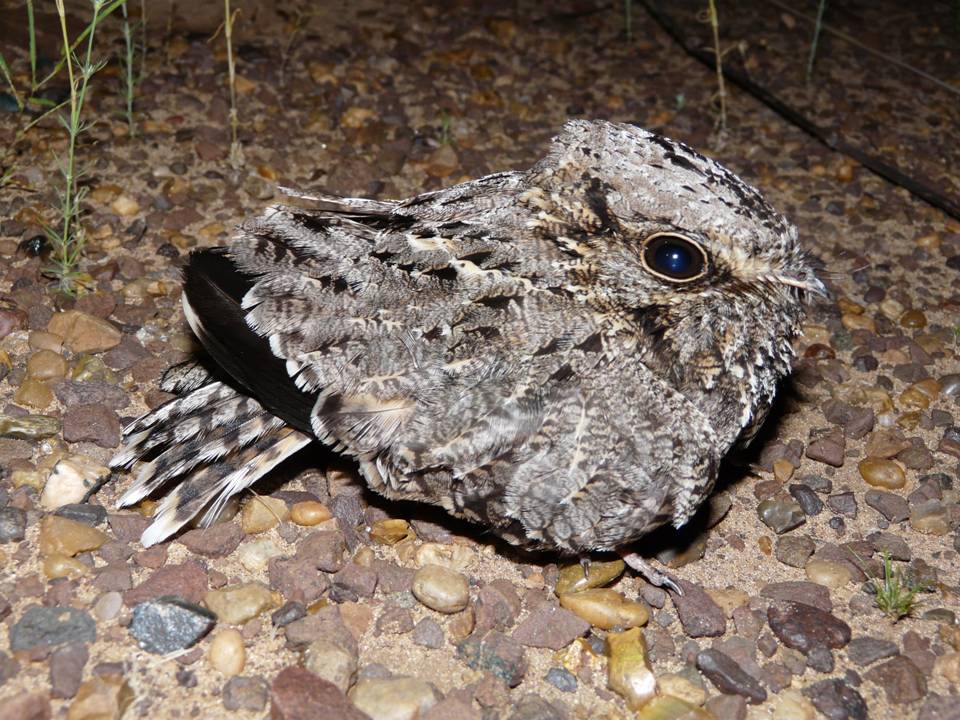

Designed by Paul Smith 2006. This website is copyrighted by law. Material contained herewith may not be used without the prior written permission of FAUNA Paraguay. Photographs on this page were taken by Paul Smith, Arne Lesterhuis and Ronald Hoff and are used with their permission.
Roadside marshes form throughout this area and with a bit of patience some interesting birds can be found here. Skulking Crested Doraditos can be surprisingly tame once you´ve found them and Long-tailed Reedfinch are only too pleased to show themselves if they feel that you are trespassign on their territory. Always conspicuous and always noisy are the various marsh icterids. Unicoloured and Chestnut-capped Blackbird are two of the most frequent species, but serious birders will be on the lookout for the frankly stunning globally-threatened Saffron-cowled Blackbird. Some might argue that his more widespread cousin the Scarlet-headed Blackbird is more attractive, but put the time in and you´ll have the opportunity to say for yourself. Another group of birds that are difficult to overlook are the seedeaters. Double-collared, White-bellied and Capped are the most commonly-encountered species, usually with some Blue-black Grassquits amongst them, but during the spring migration they are joined by a dazzling array of rare chestnut-coloured marsh seedeaters, known colloquially as the "cappuchinos". A little care is required to distinguish the bright Tawny-bellied from the dull Rufous-rumped, but the handsome Chestnut will give you no problems. Dark-throated can be suprisingly common, but my personal favourite is the endangered, white-throated Marsh Seedeater.
Extensive areas of standing water of course attract herons, storks and ibises. American Wood Stork and Maguari Stork are pretty common, and astonishing numbers of egrets of three species - Great, Cattle and Snowy - can gather in optimal foraging areas. Cocoi Heron and Whistling Heron are two more eyecatching species, whilst the little Striated Heron is usually around in numbers at the right times of year. One species that takes a bit more patience to find is the stately Pinnated Bittern, whilst in reedbeds his smaller cousins the Streak-backed and Least Bitterns prefer even denser vegetation. Various species of ibises may be seen, some gregarious and conspicuous like the White-faced and Bare-faced, others solitary and retiring like the gallery forest dwelling Green Ibis.
In the grassland proper two dull streaky brown jobs are particularly abundant, the Grassland Sparrow and the oddly-shaped Wedge-tailed Grassfinch. Check each grassfinch carefully though as the Lesser Grassfinch is also fairly common around here and the two often occur together. Another LBJ that will be of interest to serious birders is the vulnerable Ochre-breasted Pipit, Paraguay remains the global stronghold of this hard to find species and the best place to search for it is in the Mesopotamian grasslands. Another special bird you might want to search for is the localised Black-masked Finch. Other targets will probably include the delicate Sharp-tailed Grass-tyrant and the muted but handsome Bearded Tachuri. Arguably one of the most spectacular birds in this habitat is the vulnerable Cock-tailed Tyrant, especially during October and November when males perform their aeroplane-like display flights with their remarkable tails cocked well up over their backs, a behaviour that has earned them the nickname “Avioncito” (little aeroplanes).
As night falls listen out for calling tinamous, particularly Red-winged Tinamou, Spotted Nothura and Small-billed Tinamou. You will undoubtedly flush a few whilst wading through the grasslands. With the sun just disappearing over the horizon turn your attention to the skies, like a woodcock Giant Snipe emerges at this time to "rode" over adjacent forest. A couple of special owls hang around this area. It is the best place in Paraguay to see Striped Owl, while the Stygian Owl prefers slightly more wooded areas. The really really special nighbtird here though is the fantastic Sickle-winged Nightjar, locally common if you know where to look. Other nightjars you may see include Pauraque, Little, Rufous and Scissor-tailed Nightjar, making nightbirding a very rewarding experience.
With the grasslands having turned up a bag load of new ticks you will undoubtedly want to turn your attention to the gallery forest. Boggy underfoot and strangely at the same time managing to be both humid and dry, you will encounter an unusual mix of birds here quite unlike anywhere else in the country. Twittery Orange-headed Tanagers will provide permanent company for you as you walk the forest trails in search of Olive Spinetail, four species of becard - Green-backed, Crested, Grey-naped and White-winged - and a host of other interesting forest species like Crimson-crested and Pale-crested Woodpecker, Great Antshrike and Blue-fronted Amazon. If you prefer your woodpeckers small, White-barred Piculet skips through the branches above your head. The musical skills of Greyish Saltator will keep you entertained and Planalto Woodcreeper is also likely to put in appearance, especially if you have a recording of its call to help it along!
The birds that will really get your blood-pumping though will take a little bit more patience. One speciality of these gallery forests is the remarkable Bare-faced Currasow. Listen out for its quiet bubbling call and try to catch a glimpse as they walk through the undergrowth. Even more elusive is the hunch-backed Pheasant Cuckoo, as strange a bird as you are likely to see anywhere!
For mammals you are unlikely to miss the raucous Black Howler Monkeys, their harsh morning singing sessions can begin to grate when you are listening intently for currasows! Look out for Azara´s Agouti on the forest floor, while in more open areas Pampas Cavy, the wild form of the domestic guinea-pig, are everywhere! Also present is what looks like the giant form of the domestic guinea-pig, the Capybara, officially the world´s biggest rodent. With a little luck you may even catch a glimpse of a careless Nine-banded Armadillo snuffling around on the forest floor.
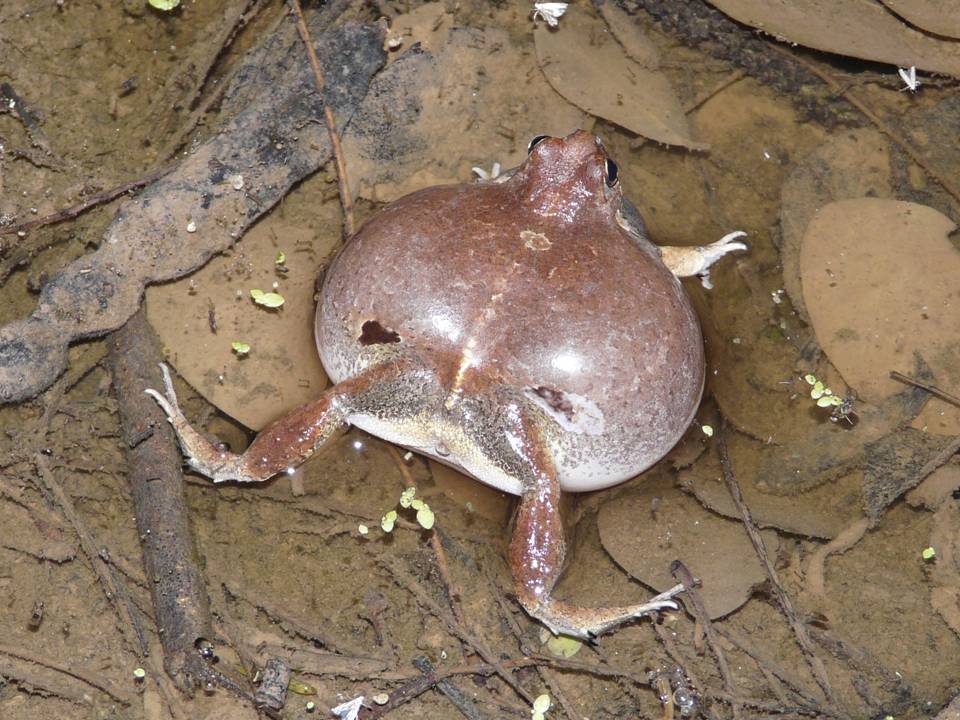
At the forest edge Yellow-bellied and Large Elaenias hawk for insects, along with the ubiquitous Tropical Kingbird and Fork-tailed Flycatcher. Masked Gnatcatchers try out the whole range of their vocal diversity on the unwary birder and Striped Cuckoo skulks in scrubby vegetation. Keep checking the sky for raptors, White-tailed Hawk is particulary common here, but Savannah Hawk, Roadside Hawk, Snail Kite, White-tailed Kite and others are often seen, whilst fenceposts are utilised by the diurnal Burrowing Owl.
The Mesopotamian Flooded Grasslands may not trip off the tongue of the average eco-tourist coming to this part of the world, but as you can see there is plenty to keep you occupied in this oft-neglected habitat. Ignore them at your peril!
ON LOCATION IN THE PARAGUAYAN MESOPOTAMIAN FLOODED GRASSLANDS
When people here Mesopotamian Flooded Grasslands, the natural reaction is to think "Middle East". In fact this uniquely threatened habitat is confined to southern Paraguay, northern Argentina and parts of Uruguay. You see Mesopotamia means "land between rivers" and that is exactly what Paraguay is, a land stuck between a bunch of rivers!
Distributed mainly in the southern Department of Misiones, these grasslands are home to a unique and threatened wildlife and form a mosaic with gallery forest which brings together a selection of birds that might be considered an interesting mix between humid forest and chaco species. Rarely visited by tourists, they reward the adventurous traveller with sightings of some rare, shy and localised species, whilst those willing to get their feet wet a bit will always find something that make their squelchy soles worthwhile! Besides its hot here, and shoes dry faster than you think in the Paraguayan sun!






